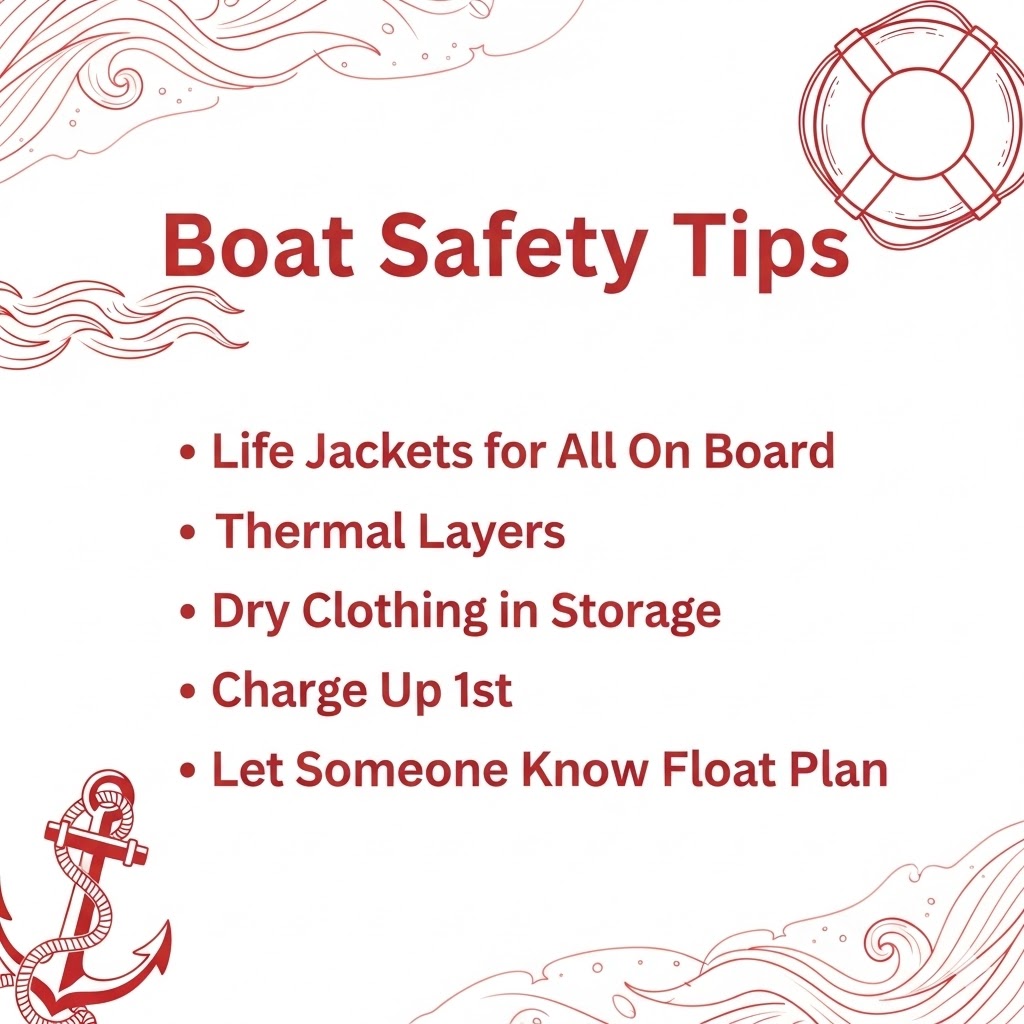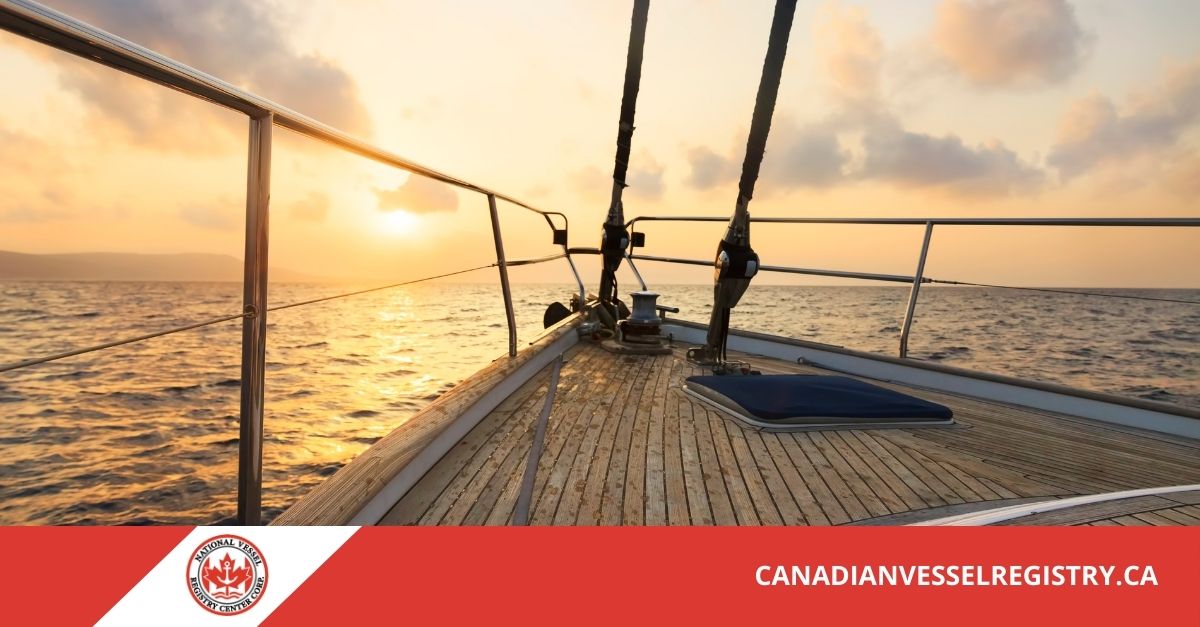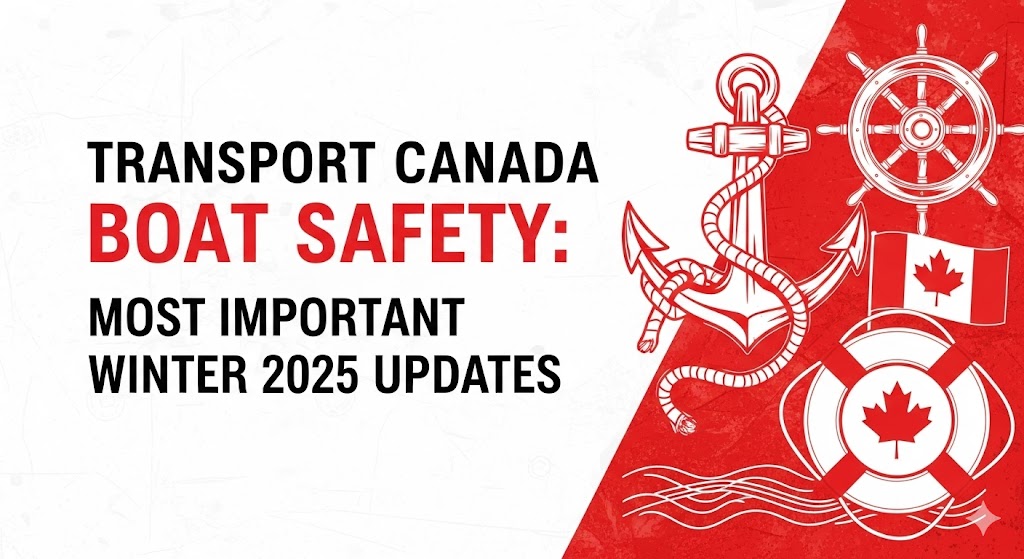Going on the water this winter? Boating safely always matters, but especially in winter, when temperatures drop. Transport Canada boating regulations and safety requirements play a significant role in how people continue to enjoy Canadian waters when the temperatures start to fall. As a portal for boat registration in Canada, we stay on top of what the authorities want. As such, they have released even more safe boat tips as the days shorten.

During this time, many boaters still choose to venture out to experience quiet harbors, stunning seasonal scenery, and calm waters. The key is knowing how to do so safely. When approached with awareness and preparation, boating later in the year can remain enjoyable, memorable, and safe.
Transport Canada Safety Priorities for Colder Weather Boating
When the temperature drops, certain boating conditions shift quickly. Transport Canada highlights the importance of adapting onboard equipment and navigation habits according to seasonal weather changes.
Cold water reduces reaction time and increases the risks associated with falls overboard, engine issues, and navigation mistakes. These considerations become more significant in late fall and early winter, when daylight hours are fewer and weather can change with little warning.
The federal boating safety information emphasizes:
- Water temperature, not just air temperature, determines risk.
- Hypothermia can develop in a matter of minutes.
- Reduced daylight requires added preparation before launching.
- Seasonal storms and wind patterns shift rapidly.
- Certain regions experience faster icing and debris accumulation.
By paying attention to official marine weather forecasts and recommended equipment lists, boaters can reduce risk and focus on enjoying the scenery and time on the water.

Transport Canada Key Safety Rules That Matter Most Late in the Season
The later boating months require additional attention to equipment and clothing. Some of the most relevant reminders include:
- Carrying well-maintained flotation devices for every person onboard.
- Bringing thermal layers, emergency blankets, and dry clothing in waterproof storage.
- Ensuring communication devices remain fully charged.
- Preparing a navigation route and letting someone onshore know your return time.
- Keeping the deck free of moisture accumulation to prevent slips in freezing conditions.
These habits help maintain control and provide quick response when conditions shift.
Navigating Canadian Waters in Late Fall and Early Winter
The beauty of cold-weather boating in Canada is undeniable. Northern forests, mountain silhouettes, and quiet waterways create a calm atmosphere that is very different from the energy of summer. However, the water itself can become significantly more hazardous.
Transport Canada reminds boaters that most boating emergencies in colder seasons result from falling into water that is near freezing.
To stay safe:
- Wear flotation devices at all times.
- Stay seated and move carefully on wet surfaces.
- Avoid standing up while the vessel is in motion.
- Keep the vessel balanced by distributing weight evenly.
- Plan to return before sunset.
These best practices help support enjoyable and safe outings while minimizing risk.
Tips for Communication and Navigation Awareness From Transport Canada
Technology can be helpful, but it is not a replacement for caution. Boaters should:
- Keep marine radios onboard.
- Bring a GPS but also carry paper charts.
- Review weather warnings before departure.
- Pay attention to markers and buoys that may shift or be removed for the winter season.
Situational awareness is essential when cold weather reduces response time.
Required Boat Registration in Canada and Staying Current With Your Vessel Records
Operating a boat legally requires accurate and current vessel documentation. When preparing for late-season boating, many owners review their records to ensure they are ready for the next year. These filings help ensure that vessel ownership and identification records remain accurate.
Some boat owners require a pleasure craft licence to operate certain types of vessels. Others will place their vessel in the small vessel register, depending on size and commercial use. These systems are distinct, and the appropriate filing depends on how the vessel is used. If ownership changes, many will use our portal to transfer boat registration online, allowing vessel records to stay updated as required.
Occasionally, an owner may need transcripts and historical research for vessel ownership background. While that process involves requesting records from the appropriate authorities, vessel owners often review this information when buying, selling, or updating paperwork.
Cold Water Gear and Emergency Preparedness
While boating later in the year can be peaceful, preparation becomes more essential. Emergency equipment should be checked more frequently when temperatures drop. This includes:
- Survival suits or thermal flotation jackets.
- Waterproof headgear and gloves.
- Floating heaving lines and boarding ladders.
- Navigation lights serviced and cleaned.
- First-aid kits verified and complete.
- Sound-signaling devices tested and reachable.
Cold water magnifies minor issues, so prevention remains the best approach.

Staying Aware of Ice, Currents, and Hidden Hazards
Ice can form gradually or appear unexpectedly depending on region and weather. It may be present on shore even when the center of the waterway appears clear. Slow speeds, careful route planning, and constant observation are essential.
Currents may also shift during these seasons, particularly near river mouths and transition points. Staying aware of:
- Underwater vegetation
- Loose debris
- Seasonal runoff levels
can make navigation smoother and safer.
How Our Online Portal Helps You Stay Prepared
Our service provides access to Canadian vessel registration and licencing forms so that when you head out onto the water, your documentation can be in proper order. This includes:
- Initial vessel registration
- Registration renewals
- Replacement documentation forms
- Forms for to Facilitate a Proper Boat Ownership Transfer
By offering digital access, we make it easier to complete these submissions from your home, office, or dock. Rather than mailing forms, many owners choose to handle their documentation online so their records remain current whenever they head back out on the water.
We do not provide advisory recommendations or evaluations of your vessel or how it should be marked. We simply make the necessary documentation forms more accessible so that vessel owners can manage the required paperwork efficiently.
Enjoying the Canadian Boating Experience in Every Season
Many boaters feel a unique connection to the water, especially when autumn leaves change colours and early winter creates still reflections across lakes and harbors. With the right preparation, the colder months remain just as rewarding as midsummer excursions.
Key reminders that support a safe and enjoyable late-season boating experience:
- Dress for the water temperature, not the air temperature.
- Check your vessel’s registration status before departure.
- Store emergency equipment in easily reachable locations.
- Monitor weather conditions regularly during your outing.
- Respect changing conditions and return to shore sooner rather than later when uncertain.
We help by making the documentation side easier to manage. You focus on the water. We provide access to the necessary forms that keep your records up to date and compliant.
Each trip on the water brings a chance to enjoy Canada’s natural beauty. With awareness, preparation, and the right vessel documentation, you can continue to do so safely throughout the fall and into the early winter months.

